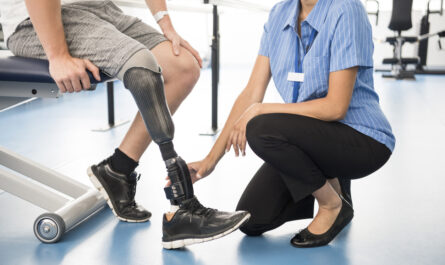What is Arthritis?
Arthritis refers to inflammation and degeneration of the joints. It is a broad term that describes more than 100 types of joint disorders. The most common form that affects pets is osteoarthritis, which is also commonly called degenerative joint disease. This type of arthritis is similar to arthritis seen in humans and occurs as cartilage within the joints breaks down over time.
Causes of Companion Animal Arthritis
There are several factors that contribute to the development of arthritis in pets:
Aging: As pets get older, just like humans, the cartilage in their joints naturally wears down over time making them more prone to Companion Animal Arthritis. Larger breed dogs are also more susceptible to arthritis at a younger age due to their heavier body weight putting more stress on the joints.
Injury: Past injuries, especially ligament or cartilage damage from accidents or overuse, can lead to arthritis development later in life as the joint tries to repair and remodel itself.
Obesity: Excess weight puts extra stress on joints and leads to faster wear and tear of cartilage. Obesity is a major risk factor for developing arthritis, especially in bigger breed dogs.
Genetics: Some breeds have a genetic predisposition to certain types of arthritis. For example, Labrador and Golden Retrievers have a higher risk of developing hip dysplasia which can lead to osteoarthritis of the hip joints.
Other causes like nutritional imbalances, hormonal abnormalities, and infectious diseases may also contribute to arthritis in some cases.
Symptoms of Companion Animal Arthritis
The most common signs of arthritis seen in pets include:
– Limping, stiffness, or lameness, especially after rest periods. Pets may favor one limb.
– Reluctance to jump, climb stairs, or exercise as much.
– Difficulty rising, lying down, or jumping into cars.
– Crouching down low to the ground instead of sitting or standing tall.
– Guarding, holding, or licking an affected joint.
– Yelping or whimpering when a joint is touched, moved, or picked up in certain positions.
– General grumpiness, lethargy, or decreased activity levels from pain.
The symptoms may start out mild and intermittent but progress over time as the arthritis damage worsens if left untreated. Catching it early makes treatment more effective.
Diagnosis and Treatment of Companion Animal Arthritis
After a physical exam and discussion of symptoms, veterinarians typically diagnose arthritis via radiographs (x-rays) of the affected joint(s). X-rays can detect things like narrowing joints spaces, bone spurs, changes to bone contours associated with degenerative joint disease.
Treatment aims to reduce pain and inflammation, protect joints, improve mobility, and delay disease progression. Options may include:
– Medication: Prescription anti-inflammatory medications (e.g. deracoxib, firocoxib, carprofen) are very effective in relieving joint pain and inflammation. Some pets require lifelong medication management.
– Dietary supplements: Nutraceuticals containing glucosamine, chondroitin, MSM, omega-3 fatty acids, and antioxidant support can help joints and may be used in combination with medications.
– Weight management: Losing extra pounds takes pressure off painful joints. Proper calorie intake and moderate exercise is recommended for overweight pets.
– Physical rehabilitation: Range-of-motion exercises, massage, cold laser therapy, acupuncture, and hydrotherapy can improve joint flexibility and strengthen muscles supporting joints.
– Surgery: In cases of severe trauma-induced arthritis or if joints are very unstable, surgical options like lavage, arthroscopy or replacement may be considered.
– Assistive devices: Products like orthopedic beds, ramps, and harnesses aid mobility in senior pets with limited movement.
With early and ongoing treatment, pets can maintain an active, comfortable quality of life well into their senior years despite having arthritis. Managing pain and protecting joints from further damage is key to slowing disease progression.
Integrative Approaches to Managing Companion Animal Arthritis
In addition to conventional medical treatment, some pet owners implement integrative approaches to better support their pet’s overall health and arthritis management long-term:
– Aquatherapy: Low-impact water exercises in a heated therapy pool builds strength while reducing joint stress.
– Acupuncture: This complementry technique uses thin needles at specific points to relieve pain by stimulating the release of feel-good chemicals in the body. Studies show it helps pain and function in pets with arthritis.
– Herbal therapy: Supplements containing herbs such as turmeric, boswellia, devil’s claw root, and nettle are thought to reduce inflammation and have pain-modulating effects when combined with medications. However, effects are less studied than glucosamine/chondroitin.
– Hydrotherapy/thermotherapy: Contrast baths alternating between warm and cool water can boost circulation and relax stiff muscles in arthritic pets.
– Chiropractic: Spinal adjustments may help align the vertebrae and reset joint mechanics when accompanied by an appropriate exercise program. Many pets feel immediate relief from neck and back pain.
– Massage: Gentle massage increases circulation, range of motion and promotes relaxation of tight muscles to relieve arthritis symptoms. Daily petting and massage can work wonders.
Integrative modalities are generally considered safe when used appropriately along with traditional medical treatment for arthritis in pets. Supervised therapies may provide extra comfort and aid the healing process.
Companion animal arthritis affects many aging cats and dogs. While surgery is sometimes needed, most pets get by comfortably with anti-inflammatory medication, physical rehab, dietary solutions, and integrative care. A combination of symptomatic relief and joint protection can significantly improve quality of life for pets with arthritis. Their joy and bond with owners makes properly managing their joint health well worth it.
*Note:
1. Source: Coherent Market Insights, Public sources, Desk research
2. We have leveraged AI tools to mine information and compile it




